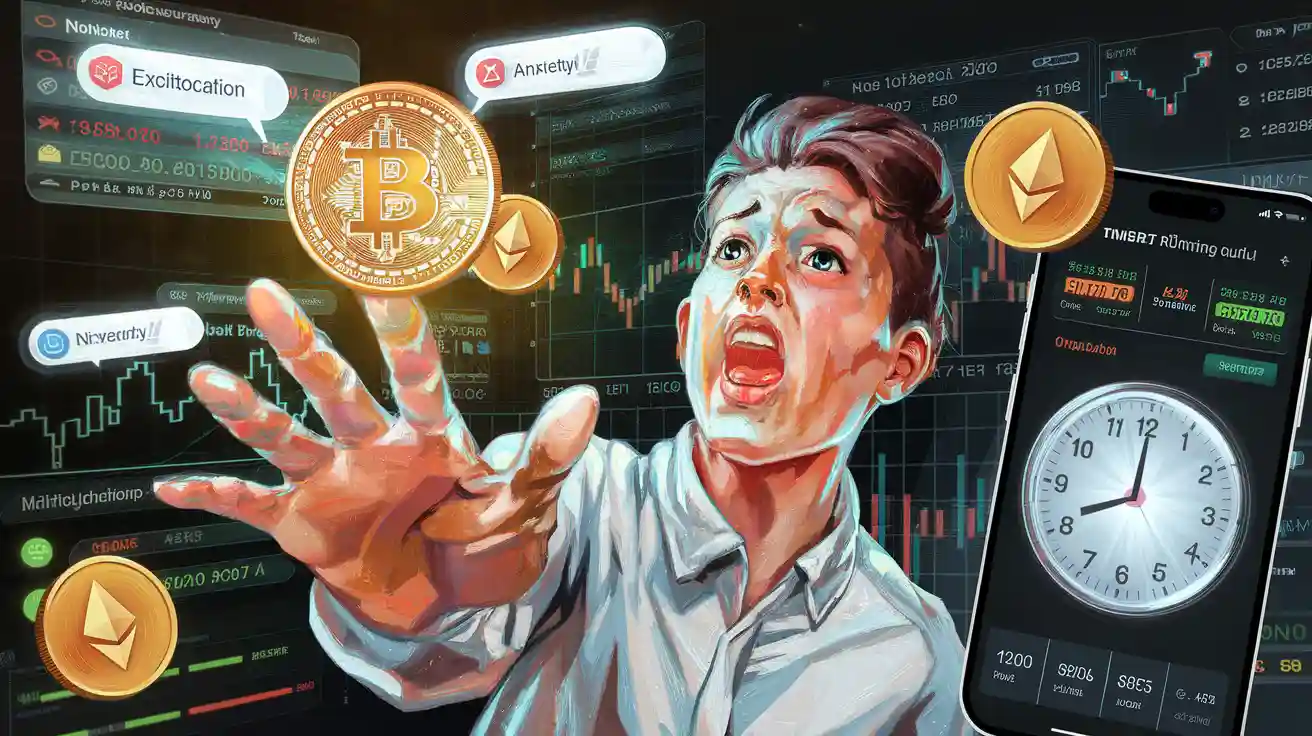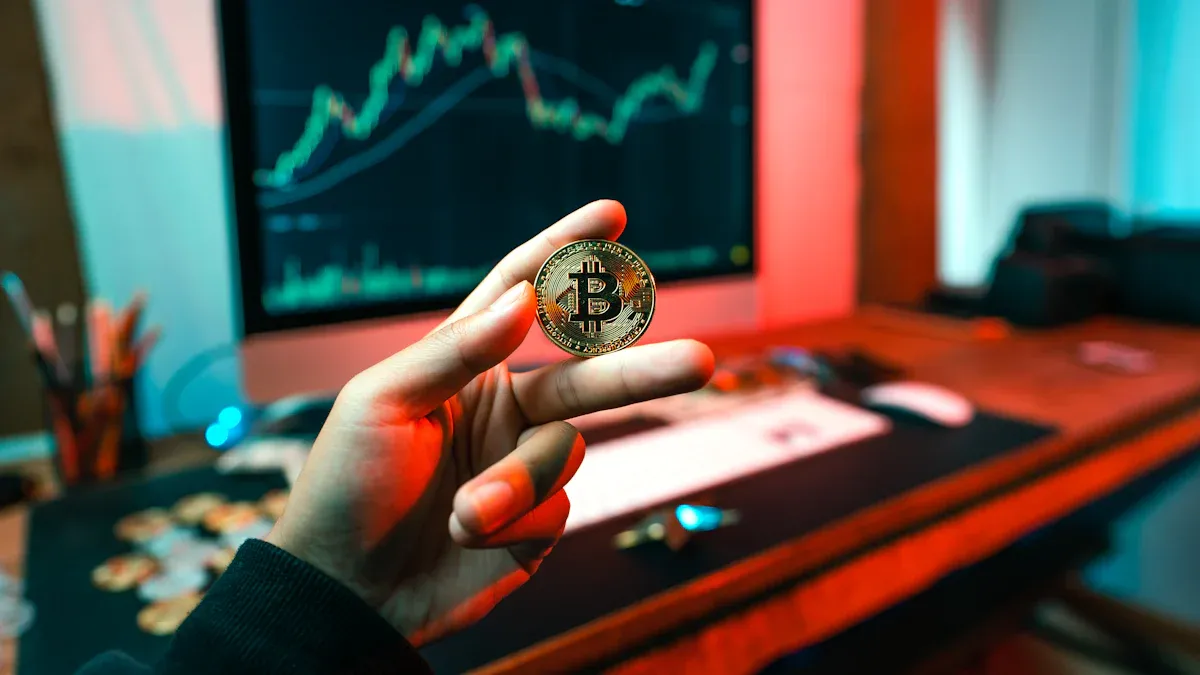What Does FOMO Stand for in the Crypto World?
2025-09-17 00:00:00
Have you ever watched a friend celebrate big crypto gains and wondered if you missed out? That feeling has a name: fear of missing out, or FOMO. In the crypto world, FOMO describes the urge to jump into trades because others seem to profit overnight. Many traders, especially those new to crypto, let this emotion guide their actions. Recent research shows that high volatility and uncertainty often trigger herd behavior, making people copy others’ moves. Understanding what does FOMO stand for in the crypto world helps traders spot risky patterns and use psychology to make smarter choices.
What Does FOMO Stand for in the Crypto World
FOMO in Crypto Explained
People often ask, what does fomo stand for in the crypto world? In simple terms, it means the fear of missing out on big profits when others seem to be making money fast. This feeling can push traders to act quickly, sometimes without thinking things through. In the crypto space, prices can jump or drop in minutes. Social media, news, and even celebrity tweets can make everyone want to join the action.
Here are some common ways fomo shows up in crypto trading:
- Buying After a Parabolic Pump: When a coin suddenly doubles or triples in price, traders see others celebrating online. They rush to buy, hoping for more gains. Many times, they buy at the top, just before prices fall.
- Selling During Market Dips (Panic Selling): When prices drop fast, fear takes over. Traders sell their coins at a loss, worried things will get worse. Later, prices often recover, and those who sold miss out.
- Jumping from Coin to Coin: Some traders chase every new trend. They switch between coins, hoping to catch the next big winner. This leads to high fees and poor results.
Tip: To avoid these traps, traders should look at the facts, use tools like charts, and focus on the real value of a project—not just the hype.
A Kraken survey found that price swings and the promise of quick profits attract many people to meme coins. Social media buzz, famous people like Elon Musk, and group excitement make fomo even stronger. Many meme coins rise in value because of viral trends, not because they have real use. This can lead to bubbles and sudden crashes.
Why FOMO Matters
Understanding what does fomo stand for in the crypto world helps traders see why it matters so much. Fomo can drive huge price swings and create risky situations for everyone involved. In 2017, Bitcoin’s price shot up from $1,000 to almost $20,000. Many people jumped in late, driven by stories of easy money and online hype. This rush led to wild price changes and big losses for those who bought at the top.
- Fomo makes people act fast, often skipping research or planning.
- Social proof and trust in familiar faces can lead to poor choices, especially in an unregulated market.
- Emotional trading, like fomo buying, increases the chance of losing money quickly.
Traders who understand what does fomo stand for in the crypto world can protect themselves. Experts say it is important to stay calm, stick to a plan, and not let emotions take over. By focusing on data and strategy, traders can avoid the costly mistakes that come from chasing the crowd.
How FOMO Influences Crypto Trading

Impulsive Decisions
FOMO often leads traders to make snap choices without thinking things through. In the crypto world, prices can swing wildly in just a few minutes. When a coin starts to rise fast, many people rush to buy, hoping to catch the next big wave. They see others making money and feel pressure to join in before it is too late. This rush can cause them to ignore their own trading plans or skip important research.
Recent market events show how quickly emotions can take over. For example, when missile alerts went off in Israel, the crypto market reacted with sudden drops and rebounds. Many traders bought or sold based on fear and excitement, not on careful planning. These emotional moves often lead to losses, especially when traders ignore risk management.
- Retail traders’ emotions, like FOMO and fear of missing out on gains, are often used by big players and exchanges. This can lead to quick decisions that end in losses.
- Price manipulation and sudden market moves become more common when traders act on emotion.
- Whales, or large investors, often wait for these moments. They buy during quiet times and sell when the crowd rushes in, making profits while others lose.
High volatility makes these problems worse. In 2024 and 2025, Bitcoin soared to almost $110,000, then dropped by over 17%. Many new investors did not understand these swings. They bought high during the hype and sold low during the panic. A Kraken survey found that 84% of crypto investors admitted to making FOMO-driven decisions, and 63% lost money because of it. This shows how powerful emotions can be in trading.
Note: Emotional trading often leads to poor results. Sticking to a plan and using data can help traders avoid costly mistakes.
Herd Mentality
Herd mentality means people follow the crowd instead of making their own choices. In crypto, this happens when traders copy what others are doing, especially during big price moves. Social media, news, and trading apps make it easy to see what everyone else is doing. This can push people to buy or sell without thinking about the real value of an investment.
A large number of Gen Z investors say that FOMO and herd mentality shape their crypto trading. In fact, 57% admit that FOMO strongly affects their decisions. Many also rely on app-based tips and push notifications, which can lead to fast, herd-driven actions. Platforms like Reddit, TikTok, and YouTube spread trends quickly. Almost 60% of young investors use these sites to get information, often chasing viral coins instead of doing their own research.
- Gamified trading apps and alerts make it easy to act fast, but they also increase the risk of mistakes.
- When everyone rushes into the same coin, prices can spike and then crash just as quickly.
- This group behavior creates more short-term swings and makes the market less stable.
Even experienced investors can fall into these traps. During the 2017 Bitcoin surge, many seasoned traders bought near the top, only to watch prices crash later. The same thing happened with Dogecoin in 2021. Hype, memes, and celebrity tweets led even experts to buy at high prices and suffer losses. The psychology behind FOMO, like wanting to fit in or fearing regret, can override logic and research for anyone.
Tip: Herd mentality can be hard to spot in yourself. Taking a step back and asking if you are following the crowd or making your own choices can help protect your investment.
Risks of FOMO in Crypto

Overpaying and Losses
FOMO can make people pay too much for coins. When prices rise fast, many traders rush to buy. They see others making money and do not want to miss out. This rush often leads to buying at the highest point. After the excitement fades, prices can drop just as quickly. Many end up holding coins worth less than what they paid.
Here are some common results of FOMO buying:
- Buying at the top and selling at a loss
- Ignoring warning signs or bad news
- Forgetting to set stop-loss orders
A trader who lets FOMO take over may skip research. They might trust rumors or social media posts instead of facts. This behavior can turn a smart investment into a costly mistake.
Tip: Always check the real value of a coin before buying. Do not let hype decide when to invest.
Vulnerability to Scams
Scammers love to target people who feel FOMO. They create fake coins, pump-and-dump schemes, or promise huge returns. When traders see others getting rich, they may ignore red flags. Scammers use flashy websites, fake reviews, and even fake celebrity endorsements.
Some warning signs of a scam include:
- Promises of guaranteed profits
- Pressure to act fast or miss out
- No clear information about the team or project
Crypto scams often spread quickly during bull runs. New traders, eager to join the next big thing, fall for these tricks. They send money to scammers and lose their entire investment.
Note: If something sounds too good to be true, it probably is. Take time to research before sending money.
Managing FOMO
Recognizing FOMO
Spotting FOMO in crypto trading can help traders avoid costly mistakes. Many people feel the urge to buy or sell when they see others making quick profits. This feeling often comes from social media, news, or even group chats. Traders might notice themselves checking prices more often, feeling anxious about missing out, or rushing into trades without research.
- A multi-agent system can track Reddit discussions and on-chain data to detect FOMO behaviors. For example, when Reddit headlines turn bullish and prices spike, traders often feel strong optimism. However, technical indicators like MACD may show a different story, warning of possible risks.
- Combining social sentiment with technical analysis helps traders spot when emotions, not facts, drive the market. This approach can limit losses during sudden reversals.
- Studies show that using both social media data and technical signals improves trading results in both bull and bear markets.
Tip: If someone feels pressure to act fast or sees a coin trending everywhere, it might be FOMO talking. Taking a step back and checking the facts can help.
FOMO does not just affect trading. Research shows that it links to mental health issues like loneliness and depression, especially among students. People who struggle with FOMO may also spend more time online and feel more isolated. Managing these feelings is important for both financial and personal well-being.
Staying Rational
Staying calm and rational is key to smart crypto trading. Traders who follow a plan and stick to their rules often do better in the long run. AI systems like AureaVault help by watching for signs of market hype, such as unusual price swings or a sudden rush into risky bets. These systems can reduce risky positions and add protection when the market gets too wild.
- AI tools spot when optimism gets too high and trigger safety measures.
- Advanced AI can adapt to changing markets and spot when big investors start to move.
- The main advantage is not perfect predictions, but making steady, logical choices even when the market feels crazy.
Note: Rational decisions help traders survive wild markets and avoid big losses.
Digital marketing often uses FOMO by showing limited-time offers or low stock alerts. This taps into people’s fear of missing out and pushes them to act fast. In crypto, the same feeling can lead to rushed trades and regret. By recognizing these triggers and sticking to a plan, traders can keep emotions in check and make better choices.
FOMO in crypto means the fear of missing out on gains. It often leads traders to make quick choices and ignore risks. They can lose money or fall for scams. Smart traders watch their feelings and stick to a plan.
- Stay calm
- Do research
- Use stop-loss orders
Remember: Good decisions come from clear thinking, not from hype. Anyone can avoid FOMO mistakes by staying alert and following a strategy.
FAQ
What does FOMO mean in crypto trading?
FOMO stands for "fear of missing out." In crypto, it describes the feeling traders get when they see others making money and worry they will miss their chance.
How can someone tell if they are trading because of FOMO?
People might notice they feel rushed, anxious, or eager to copy others. They may check prices often or buy coins just because they see them trending.
Tip: If a trader feels pressure to act fast, it could be FOMO.
Can FOMO affect experienced traders?
Yes, even experienced traders can feel FOMO. Big price swings, news, or social media hype can make anyone want to join in quickly.
What are some ways to avoid FOMO in crypto?
Traders can set clear goals, follow a plan, and use stop-loss orders. They should do their own research and avoid making decisions based only on hype.
- Stay calm
- Check facts
- Stick to a plan
Why is FOMO risky in the crypto market?
FOMO can lead to buying at high prices or falling for scams. Traders might lose money if they act on emotion instead of facts.
Note: Smart choices come from research, not from hype.